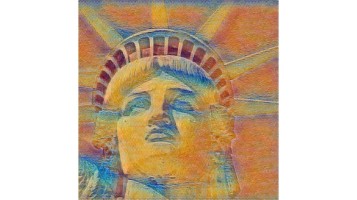If you’re looking for inspiration for your own paintings or finding the best paintings for style transfers – check out this Style Guide for Monet. Color is a critical factor in a painting’s style. How did Monet use it in his masterpieces?
As a general rule, Monet used color to highlight momentary impressions of real objects. Monet and other impressionist artists would repeatedly paint the same object or location at different times of the day to paint general impressions often in complementary colors as the light changed.
These repeated paintings formed a series and would examine different aspects of the same subject. Often, the series would have complex changes and color schemes between paintings. Let’s examine some of these colorful details.
Impression of Monet
Table of Contents
If you are a lover of bright colors and natural landscapes when perusing art, then perhaps Claude Monet will be one of your new favorite artists. Oscar Claude Monet was born on November 14th, 1840, in Paris, France.
Across his lifetime, before he died on December 5th, 1926, Monet created over 2500 pieces of art that are now displayed in art galleries and held in private collections across the world. The true number of Monet pieces is actually unknown, as many are believed to have been lost throughout the years. And Monet himself was known to have destroyed many of his own masterpieces.
| Name | Oscar-Claude Monet |
| Date of Birth | 14 November, 1840 |
| Date of Death | 5 December, 1926 |
| Location | Giverny, France |
| Movements | Impressionism |
| Artistic Focus | Paintings, Drawings |
| Favorite Medium | Oil on Canvas |
Claude Monet is considered to this day as being one of the key founders of the impressionist painting movement, in the early 1860s. Other key founders include Auguste Renoir, Edgar Degas, and Paul Cezanne, all of whom Monet became acquainted with in Paris, France.
The key characteristics in impressionist painting often include quick and broken brushwork, a key focus on both color and natural light, with most painters opting to create their work in the open air rather than inside from inside an art studio.
If you wish to discover more about the artistic characteristics of Monet, from the colors he used to any stylistic changes as well as his preferred materials, then please read on.

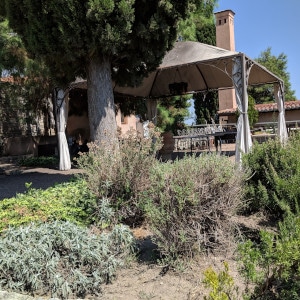

How Did Monet Use Complementary Colors?
When painting a bright area of a scene, impressionists needed to make the area pop and grab the viewer’s attention. How the painter uses color has a large effect on whether the area stands out. How did Monet do it?
Monet used complementary colors to highlight areas of his painting. Complementary colors are located on opposite sides of the color wheel and draw the viewer’s eye when the colors are used together. A famous example of this is Monet’s Houses of Parliament series of paintings.
Monet’s love of color, and incredible use of it, are two key factors that have played a significant role in why he is one of the most renowned artists to date. It was members of the impressionist movement who were true masters of the use of color within their works. [4]
It is beautiful here [in Etretat, Normandy], my friend; every day I discover even more beautiful things. It is intoxicating me, and I want to paint it all – my head is bursting. I want to fight, scratch it off, start again, because I start to see and understand. It seems to me as if I can see nature and I can catch it all… it is by observation and reflection that I discover how. That is what we are working on, continuously.
Claude Monet [1]
They were able to use color to create breathtaking visual effects. Monet was one of the primary founders of the movement, as well as modernism. As a result, he was one of the best at doing this. Two complementary colors can work together and can either make each other appear brighter, can create neutral hues, or even be blended together to create effective shadows.
Some other key examples of where Monet did this successfully include the following paintings:
- ‘Etretat, Cliff Of d’Aval’ 1885
- ‘Impression, Sunrise’ 1872
- ‘Grainstacks At Sunset, Snow Effect’ 1890-1891
Highlighting areas of a painting is an important skill. Contrasting these areas with shaded areas is an equally important painting skill. Next, we’ll examine how Monet created contrast.
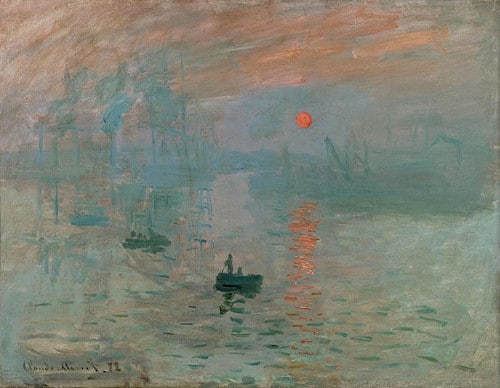
Why Did Monet Avoid Black?
Impressionist painters are well known for using bright colors and for examining the relationship between color and shadow in their paintings. For the darkest areas, many think black would be a helpful tool. Monet always avoided black. [3]
On average, Monet avoided black because he believed it did not exist in nature. Mixed colors were used to depict light and shadow, so impressionists avoided black when making paintings. French Prime minister Georges Clemenceau removed the black from Monet’s casket at his funeral.
There is another key reason Monet and other impressionists avoided the color black within their paintings. Using black to create contrast within a painting can actually reduce the incredible effects that occur from making changes to the hue.
| # | Painting Name | Year Painted | Location |
|---|---|---|---|
| 1 | San Giorgio Maggiore at Dusk | 1908-1912 | National Museum Cardiff, Wales, United Kingdom |
| 2 | Water Lilies Series | 1896-1926 | Metropolitan Museum of Art, New York, United States |
| 3 | Impression, Sunrise | 1872 | Musee Marmottan Monet, Paris, France |
| 4 | Rouen Cathedral Series | 1892-1893 | Musee d’Orsay, Paris, France |
| 5 | Haystack at the End of Summer | 1890-1891 | Art Institute of Chicago, Chicago, United States |
| 6 | Woman with a Parasol | 1875 | National Gallery of Art, Washington DC, United States |
| 7 | Japanese Bridge over a Pond of Water Lilies | 1899 | Metropolitan Museum of Art, New York United States |
| 8 | The Saint-Lazare Station | 1877 | Musee D’Orsay, Paris, France |
| 9 | Houses of Parliament Series | 1900-1901 | Art Institute of Chicago, Chicago, United States |
| 10 | La Grenouillere | 1869 | Metropolitan Museum of Art, New York United States |
Hue in short form is another word for ‘color’. People tend to use ‘hue’ instead when a modern pigment is being used rather than a traditional one. This term is often used when referring specifically to colors of paint rather than other materials.
Not only was the color black believed to devalue pieces of art, but creating a shade relatively close to the color of black was also easy to achieve. Monet would instead combine reds, blues, and greens to create a color close to black.
By not using black, Monet made all of his oil paintings brighter and more colorful. Since the material also affects the color, it is important to cover how Monet used other materials.

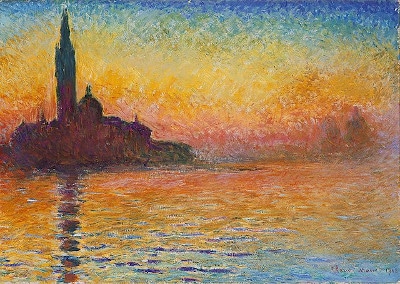

Did Monet Use Pastels?
Almost all of Monet’s famous paintings are oil paintings. The colors are brighter and are perfect for the style of impressionist painters. Many people wonder if he ever used pastel paints.
As a whole, Monet used pastels discretely to create quick drafts of paintings. During his time, it was popular to use oil paints ‘en plein air’ and spontaneously paint outdoors. He sometimes used pastels to get a rough idea of his oil painting and would give these pastels to friends as gifts.
Throughout his career, Monet had a keen tight lease on what people wrote about both him as a person as well as his art. It was this influence that allowed him to control the narrative on what works were allowed to be shown in public, and those that were not.
I’m very happy, very delighted… for I am surrounded here by all that I love. I spent my time out of doors… and naturally, I’m working all the time, and I think this year I’m going to do some serious things. And then in the evening, dear fellow, I come home to my little cottage to find a good fire and a dear little family.
Claude Monet [2]
The only method that could be considered ‘lesser’ than oil painting that Monet held in any public regard was pastels. Although he made sure they did not receive the same public knowledge as his oil paintings. When Monet gifted his pastel creations to friends and family each piece still contained his signature.
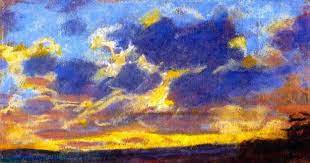
Monet spent most of his life denying and avoiding talking about the role these ‘simpler’ methods had in his artistic journey.
This is rather ironic, as privately Monet also always carried around a small sketchpad which he used to draw various landscapes and locations that he happened to visit during his travels.
Some of Monet’s most popular pastel creations include:
- ‘Etretat, The Needle Rock and Porte d’Aval’ 1885
- ‘Caloges and Boat at Etretat’ 1865-70
- ‘Nightfall’ 1865-70
Like most other Monet pieces, they are all quite colorful and missing the color black.
Monet’s pastels were an important part of drafting and refining his masterpieces. Over time, the style of these masterpieces started to change.

How Did Monet’s Style Change?
Some of the most noticeably different paintings made by Monet were created towards the end of his life. Some speculated that Monet was experimenting with expressionism and making his painting more abstract. Unfortunately, there is a darker reason Monet’s style changed.
Monet’s painting style changed towards the end of his life as his cataracts caused his vision to worsen. He avoided having corrective surgery over the fear that it could leave him blind and unable to paint. After surgery, he destroyed many of his paintings with distorted colors.
During the time period before he had his cataracts removed, Monet’s works appeared to have a reddish hue to them, which is a known symptom for those that suffer from the condition. But, once Monet had his cataracts removed, his work started to contain more vivid blue colors and violet light. This is typical for those that have no sight issues. [5]
I climb up, go down again, then climb up once more; between all my studies, as a relaxation, I explore every footpath, always curious to see something new.
Claude Monet [2]
There are also numerous factors that caused Monet’s style to change organically over the years. Some factors are because of personal experiences within Monet’s own private life. Other changes are a result of natural growth and development which many if not all, other artists experience throughout their painting lives. [6]
For example, Monet’s growth in artistic ability and developing skills saw him progress from using charcoals to oil paints in his early career. It is natural for most artists to not stick to the same medium throughout their entire career, and Monet is no different in that sense. However, it was under the guidance of Eugene Boudin that Monet learned about the ‘en plein air’ painting style. [7]
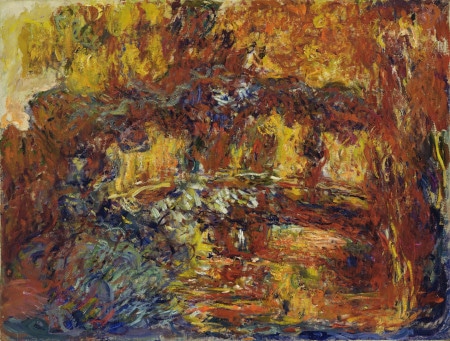
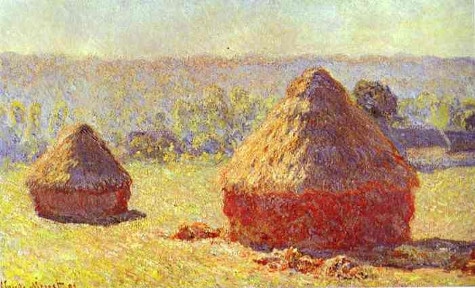
Artists that opt for the ‘en plein air’ style prefer to paint outdoors with their subject matter in full view. Even in the early years of Monet’s career, he displayed a deep passion for the use of light within his work. It was not until changing to the ‘en plein air’ style that he was able to fully embrace this love.
This passion for natural light changed to an obsession towards the end of Monet’s career. Rather than the full, varied landscapes people were used to seeing from Monet, he created a series of Haystack paintings that were captured at his property in Giverny. He endeavored to capture the same haystack in a variety of different lighting. It was this obsession that was the most notable subject style change seen throughout Monet’s works. [8]
Looking for inspiration from other styles for your own artwork and style transfers?
- Express your creative side by checking out the Van Gogh Style Guide
- Peek at the masterpieces in the Picasso Style Guide
- Go on an abstract adventure with the Jackson Pollock Style Guide
- Take a Rothko Retrospective with the Mark Rothko Style Guide
- Journey through the symbolic depths with Frida Kahlo’s Style Guide
- Discover Dali’s surreal style with the Salvador Dali Style Guide
Want to learn more about how style transfers and neural networks work?
- Don’t lose out on my article about what content loss is!
- Want to know about Dropout in your own networks? Check out my post on if you should always use Dropout.
- One important factor is having a large enough set of training data to train the style transfer network. Want to learn more about making the training set larger? Check out my Data Augmentation post!
- Want to learn more about the influential VGG network? Check out my post covering why VGG is so common!
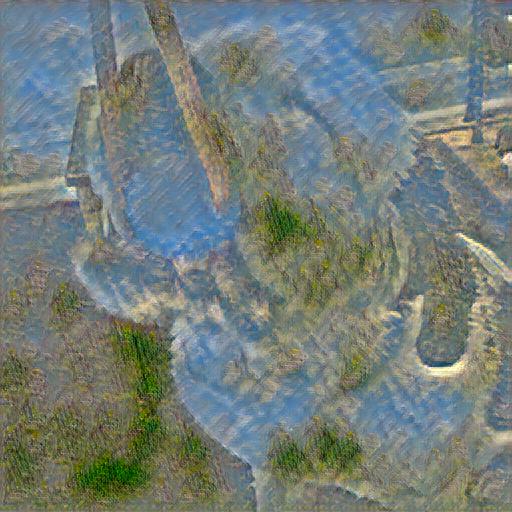

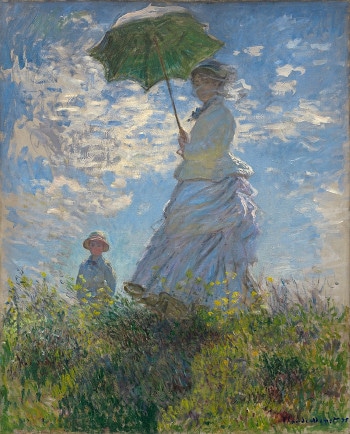
Final Impressions
To summarize what motivated Monet to create large amounts of beautiful art throughout the years: He had a passion for depicting natural light and how it can affect the life we see around us. It was this obsession of accurately capturing light that dictated the colors Monet used, the subject matters he painted, as well as the materials he used to create the masterpieces that we know and love today.
If you want to check out other posts related to style transfers, check out the Style Transfers category.
Want to learn more about neural networks in python? Check out my tutorial about implementing Bayesian Neural Networks using the most popular python libraries.
Want to know more about style transfers and digital art? Read my post about Style Transfers, Neural Networks, and Digital Art.
Get Notified When We Publish Similar Articles
References
- Russell, Vivian. Monet’s landscapes. Frances Lincoln Limited, 2000. https://www.goodreads.com/book/show/1442412.Monet_s_Landscapes
- Sullivan, K. E. Monet. London: Brockhampton, 1996. Print. https://www.amazon.com/Monet-Discovering-Art-K-Sullivan/dp/1841860972
- Monet – ngv.vic.gov.au. (n.d.). Retrieved March 23, 2022, from https://www.ngv.vic.gov.au/monet-timeline/lightboxesweb/29-2.php
- Dredge, Paula, Richard Wuhrer, and Matthew R. Phillips. “Monet’s painting under the microscope.” Microscopy and Microanalysis 9.2 (2003): 139-143. https://opus.lib.uts.edu.au/bitstream/10453/721/1/2003000424.pdf
- Gruener, Anna. “The effect of cataracts and cataract surgery on Claude Monet.” British Journal of General Practice 65.634 (2015): 254-255. https://www.ncbi.nlm.nih.gov/pmc/articles/PMC4408507/
- Stokes, Patricia D. “Variability, constraints, and creativity: Shedding light on Claude Monet.” American Psychologist 56.4 (2001): 355. https://psycnet.apa.org/doiLanding?doi=10.1037%2F0003-066X.56.4.355
- Kalba, Laura Anne. Color in the Age of Impressionism. Penn State University Press, 2021. https://www.degruyter.com/document/doi/10.1515/9780271079806/html
- Conway, Bevil R. “Color consilience: color through the lens of art practice, history, philosophy, and neuroscience.” Annals of the New York Academy of Sciences 1251.1 (2012): 77-94. https://nyaspubs.onlinelibrary.wiley.com/doi/abs/10.1111/j.1749-6632.2012.06470.x
